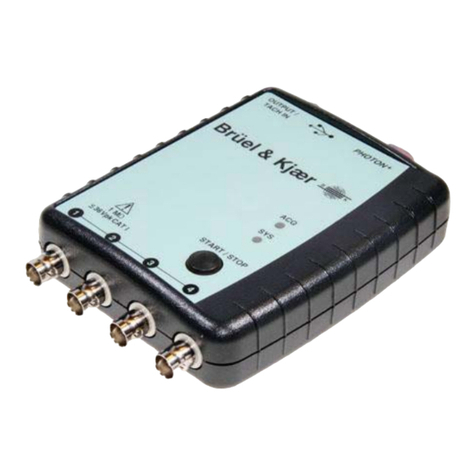
CONTENTS
1.
INTRODUCTION
AND
SPECIFICATIONS
(Product
Data)
............................................................................. 1
2.
CONTROLS
................................................................
..
.............................................................................................. 3
2.1. DIGITAL STROBOSCOPE TYPE 4913................................................................................ 3
Front Panel ......................................................................................
..
..................................... 3
Rear Panel ..............................................................................................................................6
2.2. FIBRE-OPTIC STROBOSCOPE SOURCE TYPE 4915
..
...........................
..
...................... 8
3.
OPERATION
WITH
HAND-HELD
LAMP
UNIT
US
0008.................................................................................. 9
3.1
. PRELIMINARY ........................................................................................................................9
Environment and Handling................................................................................................... 9
Mounting ................................................................................................................................. 9
Connection
of
Mains Supply ............................................................................................. 10
3.2. OPERATION AS A "FREE-RUNNING" STROBOSCOPE ..............................................
11
Determination
of
Motion
Frequency
or
Speed ...............................................................
11
Determination
of
Phase Delay
or
Lag.............................................................................. 13
Timing
of
Motion
Sequences and Events........................................................................ 14
Slow-Motion
Observation................................................................................................... 14
3.3. OPERATION FROM EXTERNAL TRIGGER SOURCE .................................................... 15
External Instruments ...........................................................................................................
15
Photoelectric Tachometer Probe
MM
0012 ..................................................................... 16
Magnetic Transducer
MM
0002 ......................................................................................... 17
3.4. USE WITH LINE TRIGGER SOURCE ...............................................................................
17
3.5. USE WITH DOUBLE FLASH IGNITION ............................................................................ 18
3.6. USE WITH SINGLE FLASH IGNITION .............................................................................. 18
Local and Remote Activation ............................................................................................ 18
Flash
Photography
............................................................................................................... 18
3.7. USE WITH AUXILIARY LIGHT SOURCE.......................................................................... 19
3.8. REMOTE CONTROL ...........................................................................................................
21
4.
OPERATION
WITH
FIBRE-OPTIC
SOURCE
TYPE
4915..............................................................................22
4.1. PRELIMINARY ......................................................................................................................
22
Environment and Handling.................................................................................................
22
Connections
and Mounting................................................................................................
22
Use and
Care
of
Fibre-Optic
Cable AE 6000 .................................................................
23
4.2. NORMAL SINGLE AND REPETITIVE FLASH OPERATION...........................................
24
4.3. SINGLE
"PHOTO"
FLASH OPERATION..........................................................................
24
Triggering .............................................................................................................................
24
Flash
Photography
...............................................................................................................
25




























